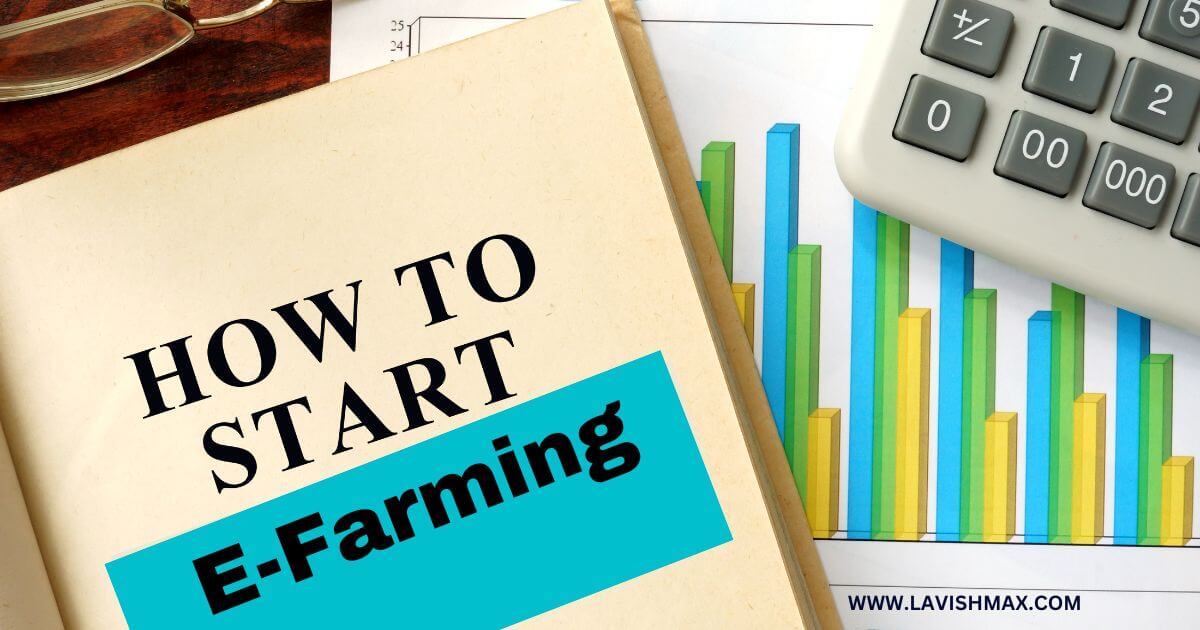In the age of digital transformation, the agricultural landscape is evolving rapidly. Traditional farming methods are being complemented, and in some cases, replaced by innovative e-farming practices.
E-farming, short for electronic farming, involves leveraging technology to streamline agricultural activities and reach wider markets. If you’re eager to embark on this journey, here’s a comprehensive guide on how to start e-farming successfully.
Understanding E-Farming
E-farming integrates technology into agricultural practices, encompassing various aspects such as online marketplaces, data-driven decision-making, precision agriculture, and more.
E-farming” typically refers to the application of digital technology, including the internet and electronic devices, in various agricultural activities and practices.
It involves the use of online platforms, mobile apps, data analytics, IoT (Internet of Things), and other digital tools to enhance different aspects of farming, such as crop management, livestock monitoring, market access, supply chain management, and decision-making processes for farmers.
E-farming platforms may offer services like weather forecasting, crop monitoring, soil analysis, online marketplaces for buying and selling agricultural products, farm management software, and educational resources.
These technologies aim to optimize farming operations, increase efficiency, improve productivity, and facilitate better communication and connectivity within the agricultural sector.
Embracing e-farming opens up a world of opportunities to improve efficiency, increase yields, and connect directly with consumers.
Steps to Start E-Farming:
1. Define Your Niche and Goals
Identify the specific niche or area within agriculture that interests you. Whether it’s organic produce, hydroponics, livestock, or agroforestry, understanding your niche is crucial.
Define your goals clearly whether it’s sustainability, higher yields, or reaching new markets.
2. Research and Educate Yourself
Take the time to research e-farming techniques, technologies, and best practices. Attend workshops, and webinars, or enroll in online courses that focus on digital agriculture, farm management software, online marketing, and e-commerce platforms.
3. Develop a Business Plan
Create a detailed business plan outlining your objectives, target audience, marketing strategies, budget allocation, and a timeline. This plan will serve as your roadmap and help secure funding or support from investors if needed.
4. Invest in Technology
Select the right tools and technology that align with your farming goals. This could include farm management software, IoT devices for monitoring crops or livestock, drones for aerial surveys, or even blockchain for transparent supply chain management.
5. Establish an Online Presence
Try to have your website and some social media accounts to showcase your products or services. Utilize digital marketing strategies such as content creation, search engine optimization (SEO), and social media marketing to reach your target audience effectively.
6. Implement Sustainable Practices
Embrace sustainability in your e-farming journey. Explore eco-friendly farming methods, use renewable energy sources where possible, and prioritize waste reduction and water conservation.
7. Network and Collaborate
Engage with other e-farmers, agricultural communities, and industry experts. Collaborate on projects, exchange knowledge, and stay updated with the latest trends and innovations in the e-farming sphere.
8. Monitor, Evaluate, and Adapt
Regularly assess your e-farming operations. Analyze data collected from various sources to make informed decisions. Adapt and evolve your strategies based on the insights gained to optimize productivity and efficiency.
Conclusion
Embarking on an e-farming venture demands a blend of agricultural expertise and technological prowess.
By following these steps and staying committed to continuous learning and innovation, you can successfully navigate the world of e-farming.
Embrace technology, sustainable practices, and a strategic approach to cultivate success in the ever-evolving digital agricultural landscape.
Start your e-farming journey today and witness the transformation it brings to your agricultural endeavors.
